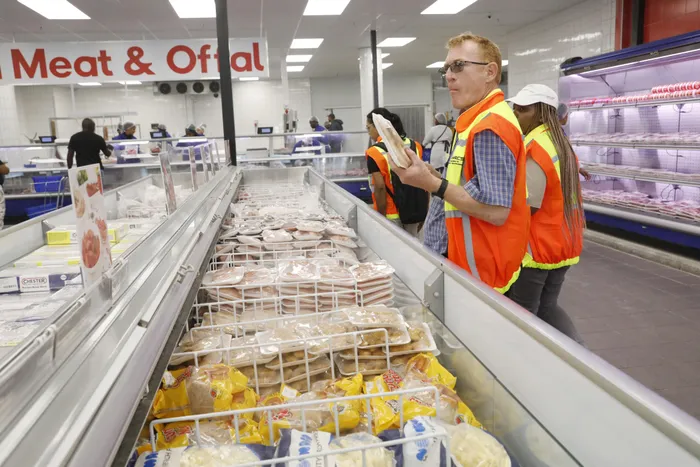Consumers to dig deep as food prices reach 18-month high amidst meat, vegetable price hikes
INFLATION

Agricultural Business Chamber of South Africa (Agbiz) sparked concern that consumer food price inflation rose to the highest level in 18 months, at 5.5% in July 2025, from 4.7% in June.
Image: Doctor Ngcobo/ Independent Newspapers
South Africa's consumers are bracing for more challenging times as the Agricultural Business Chamber of South Africa (Agbiz) has raised concerns regarding a significant rise in consumer food price inflation, which surged to 5.5% in July 2025, up from 4.7% in June.
This increase, the steepest seen in 18 months, is part of a broader trend reflected in the recent Consumer Price Index (CPI) release by Stats SA on Wednesday, which showed an overall CPI increase from 3.0% in June to 3.5% in July.
Wandile Sihlobo, chief economist at Agbiz, on Thursday pointed out the clear acceleration in food prices. He emphasised that the primary drivers of this inflation have been the continued increases in meat and vegetable prices.
Sihlobo elaborated on the factors contributing to the rise in meat prices, noting that the recent outbreak of avian influenza in Brazil had forced South Africa to temporarily halt imports of poultry products, fostering market panic.
“First, the outbreak of avian influenza in Brazil led to South Africa temporarily restricting the imports of poultry products from Brazil, causing panic in the market. However, the restrictions have now been lifted, and imports are slowly recovering,” he said.
“Second, South Africa experienced an outbreak of foot-and-mouth disease, which led to concerns about red meat supplies and some panic buying, thus temporarily pushing up prices.”
Fortunately, with the lifting of restrictions, imports are now beginning to recover. Furthermore, a recent foot-and-mouth disease outbreak raised concerns about red meat supplies, leading to further price inflation due to panic buying.
However, Sihlobo was optimistic about the situation, indicating that slaughtering operations have resumed in major feedlots and was thus expecting to see easing in red meat prices reflected in upcoming inflation figures.
He added that temporary trade restrictions on South African exports due to disease outbreaks could eventually lead to increased local meat supply, positively affecting prices.
The increase in vegetable prices has largely been influenced by excessive rainfall, which has adversely affected crop yields in various Fresh Produce Markets over recent months.
Sihlobo maintained a cautiously optimistic outlook, suggesting that improvements in the recent data might indicate the acceleration of price inflation could be short-lived.
“In essence, while food price inflation accelerated in July, we expect some moderation in the coming months, as the prices of the above products potentially slow, and we see the continuous benefits of an ample domestic grains harvest and a decent fruit harvest that continue to enter the market.”
Mervyn Abrahams, director at Pietermaritzburg Economic Justice and Dignity Group (PMBEJD), highlighted that consumers have increasingly reported meat becoming out of reach, forcing them to make difficult choices about including essential protein sources in their diets.
“From the first quarter of the year, consumers started complaining of this and continue to express the difficult choices they have to make when buying this important source of protein as part of their food basket of essential food items. The impact of foot-and-mouth disease has been felt across,” Abrahams said.
Abrahams expressed hope that the resumption of poultry imports could alleviate some of the pressure on consumers, who have been enduring financial strain.
“One of the challenges of being part of the global village is that South Africa is not immune from any developments occurring around the world. The important part, though, is that the country should develop a coping mechanism to cushion its citizens from negative developments.”
Evashnee Naidu, regional manager for Black Sash in KwaZulu-Natal, echoed these sentiments, pointing out that the persistent increases in meat and vegetable prices hinder access to critical nutrition for impoverished households.
“Meat and vegetables should be the staple in households, but these increases prevent the most impoverished in our communities from adequately accessing items for good food nutrition,” Naidu said.
“Whilst external factors significantly contribute to these increases, there has also been a failure on the part of the government to create measures to cushion the poorest of the poor and those struggling to make ends meet to be able to afford basic necessities.”
BUSINESS REPORT